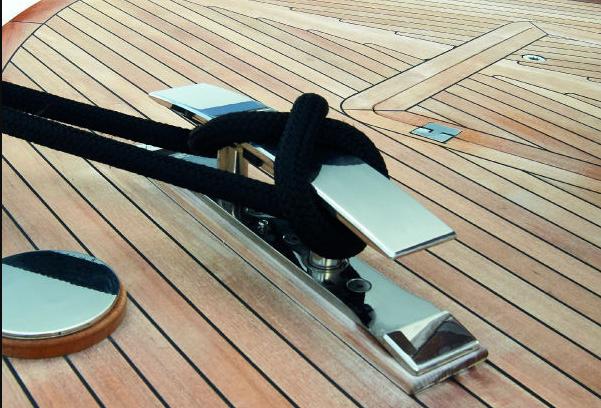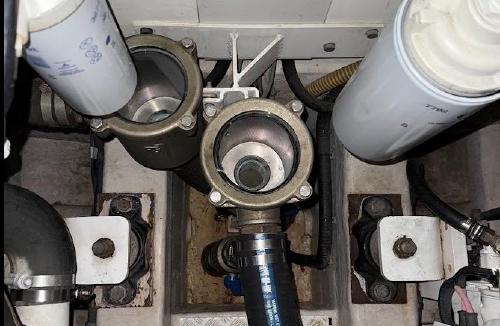If you’re anything like me, you enjoy the thrill of taking on a DIY project, especially when it comes to your beloved vessel. One essential maintenance task that many boat owners overlook is rebedding deck hardware. Whether it’s a winch, cleat, or any other piece of hardware, proper rebedding is crucial for preventing leaks and ensuring your boat stays in shipshape.
In this article, we’ll dive into the nitty-gritty of rebedding deck hardware and explore the differences between popular sealants like 3M 5200, 4200, and 4000, as well as their Sikaflex counterparts. So grab your tools, and let’s get to work!
Why Rebedding is Important
Before we jump into the how-to, let’s chat a bit about why rebedding is so essential. Over time, the sealant around your deck hardware can degrade due to exposure to UV rays, saltwater, and general wear and tear. If left unchecked, this can lead to leaks, which may cause significant damage to your boat’s structure over time.
Not only does rebedding help keep water out, but it also helps prevent corrosion of the hardware itself. If you notice any signs of leakage, it’s time to roll up your sleeves and tackle this project.
Tools and Materials You’ll Need
Before you start, make sure you have the following tools and materials on hand:
- A utility knife or caulk remover
- Sandpaper (medium and fine grit)
- A putty knife
- Clean rags
- Acetone or a similar solvent
- A caulking gun
- Sealant (3M or Sikaflex)
- Optional: a brush for spreading sealant
Step-by-Step Guide to Rebedding
Step 1: Remove the Old Sealant
To begin, you’ll need to remove the old sealant around the hardware. Use a utility knife to carefully cut along the edges of the sealant. Be gentle to avoid scratching your boat’s gelcoat. Once you’ve cut through the sealant, use a putty knife to pry the hardware loose.
If it’s stubborn, a bit of gentle prying and wiggling should do the trick. Remember to be patient–this step can take some time, but it’s vital for a good seal later!
Step 2: Clean the Area
Once the hardware is free, it’s time to clean the area. Use acetone or a similar solvent to wipe down the surface where the hardware was mounted. This will help remove any leftover sealant residue and ensure the new sealant adheres properly. Don’t forget to clean the hardware itself!
After cleaning, sand the surface lightly with medium grit sandpaper to create a better bonding surface. Follow up with fine grit sandpaper to smooth it out.
Step 3: Choose Your Sealant
Now comes the fun part–choosing your sealant. Let’s break down the differences between 3M and Sikaflex products to help you decide.
3M Sealants
3M 5200: This is a heavy-duty sealant known for its incredible strength and durability. It’s a polyurethane sealant, which means it’s waterproof and can withstand a lot of movement without breaking down. However, it cures slowly, taking about 7 days to fully set. It’s ideal for areas where you want a permanent bond.
3M 4200: This one is a bit more versatile. It offers decent adhesion but allows for disassembly if needed. It cures faster than 5200, usually in about 24 hours, making it a good option if you want something that’s strong but not permanent.
3M 4000: This is a more flexible sealant, designed for use in applications where some movement is expected. It’s not as strong as the 5200 or 4200, but it’s great for areas that require a bit of give.
Sikaflex Sealants
Sikaflex 291: This is comparable to 3M 5200, offering outstanding adhesion and durability. It’s also a polyurethane sealant, which means it’s resistant to UV light and weathering. It’s a great option for permanent bonds.
Sikaflex 221: This one is similar to 3M 4200. It provides a good bond and allows for some flexibility, making it easier to disassemble if needed. It’s a solid choice for those who want something reliable but not too permanent.
Sikaflex 515: Comparable to 3M 4000, this sealant is designed for marine applications and provides good elasticity. It’s perfect for areas that might experience movement, such as deck hardware.
Step 4: Apply the New Sealant
We recommend you use M3 4200 or Sikaflex 221. Now that you’ve selected your sealant, it’s time to apply it. Load your caulking gun with the sealant and apply a generous bead around the mounting area of the hardware. Make sure to cover the entire area that will be in contact with the hardware.
If you’re using a brush, you can also spread the sealant evenly to ensure a good bond. Once you’ve applied the sealant, carefully place the hardware back into position. Make sure it’s aligned correctly before pressing down to set it in place.
Step 5: Secure the Hardware
After placing the hardware, secure it according to the manufacturer’s specifications. Use screws or bolts, depending on what type of hardware you’re working with. Be careful not to overtighten, as this can compress the sealant too much and lead to a weak bond.
Step 6: Clean Up
Once everything is secured, take a clean rag and wipe away any excess sealant that may have squeezed out during installation. It’s best to do this while the sealant is still wet, as it will be easier to remove.
Step 7: Let it Cure
Finally, let the sealant cure according to the manufacturer’s instructions. This is crucial for ensuring that it adheres properly and forms a watertight seal. Depending on the sealant you used, this could take anywhere from a day to a week.
Maintenance Tips
After you’ve done the hard work of rebedding your deck hardware, it’s important to keep an eye on it. Regularly inspect the area for signs of wear, and address any issues promptly. A little bit of preventative maintenance can go a long way in keeping your boat in top condition.
So, there you have it–a comprehensive DIY guide to rebedding deck hardware on your boat! With the right tools, materials, and a bit of patience, you can tackle this project and ensure your beloved vessel stays dry and happy on the water.




Use the share button below if you liked it.